The best stargazing apps put the cosmos in the palm of your hand, letting you map the galaxies, stars, and planets from almost any location on earth. They’re not just an essential component of any amateur astronomer’s toolkit, but a fantastic entry point for anyone curious to learn more about the universe, and our place in it.
A great stargazing app can make the wonders of the night sky more accessible and comprehensible than almost any other resource, and can instill a familiarity with the makeup of the cosmos that you can carry with you your whole life, while significantly enhancing any interest in astronomy and astrophotography.
You don’t even have to venture outside to use most stargazing apps, as your phone’s GPS works in conjunction with the app to pinpoint the constellations and other deep space objects from wherever you happen to be. For dedicated astronomers out in the field, however, the best stargazing apps make for an invaluable tool when paired with the best telescopes or best binoculars.
Star-charting apps share some things in common – to locate heavenly bodies you simply point your phone at a patch of sky and the app will display the name and information about the object you’re pointing towards – but they vary in complexity, features, presentation and price.
To help you choose the right star map app for your needs, we’ve assembled a collection of the best stargazing apps currently available.
SkySafari 6 Pro: Best stargazing app overall
A comprehensive app from the more expensive end of the market, Skysafari 6 Pro is festooned with information about the night sky – you’re almost guaranteed to learn something from it, even if you’re a veteran stargazer steeped in astronomical lore.
That comes at a price, however, and this is an expensive app. It’s $39.99 with IAPs on top, so you have to really want it. Get it installed on your phone and tablet and point it at the night sky, however, and the investment you’ve made makes itself plain: the app can identify constellations, or you can connect it to your telescope and have it guide you around the stars. A great feature is ‘Tonight’s Best’ – a guided tour of the finest sights on show that changes as the year goes on.
As an educational tool, SkySafari 6 Pro can be hard to beat, and there are a lot more features that we go into in review. The only complaint is the price.
Stellarium: Best stargazing app for realistic night skies
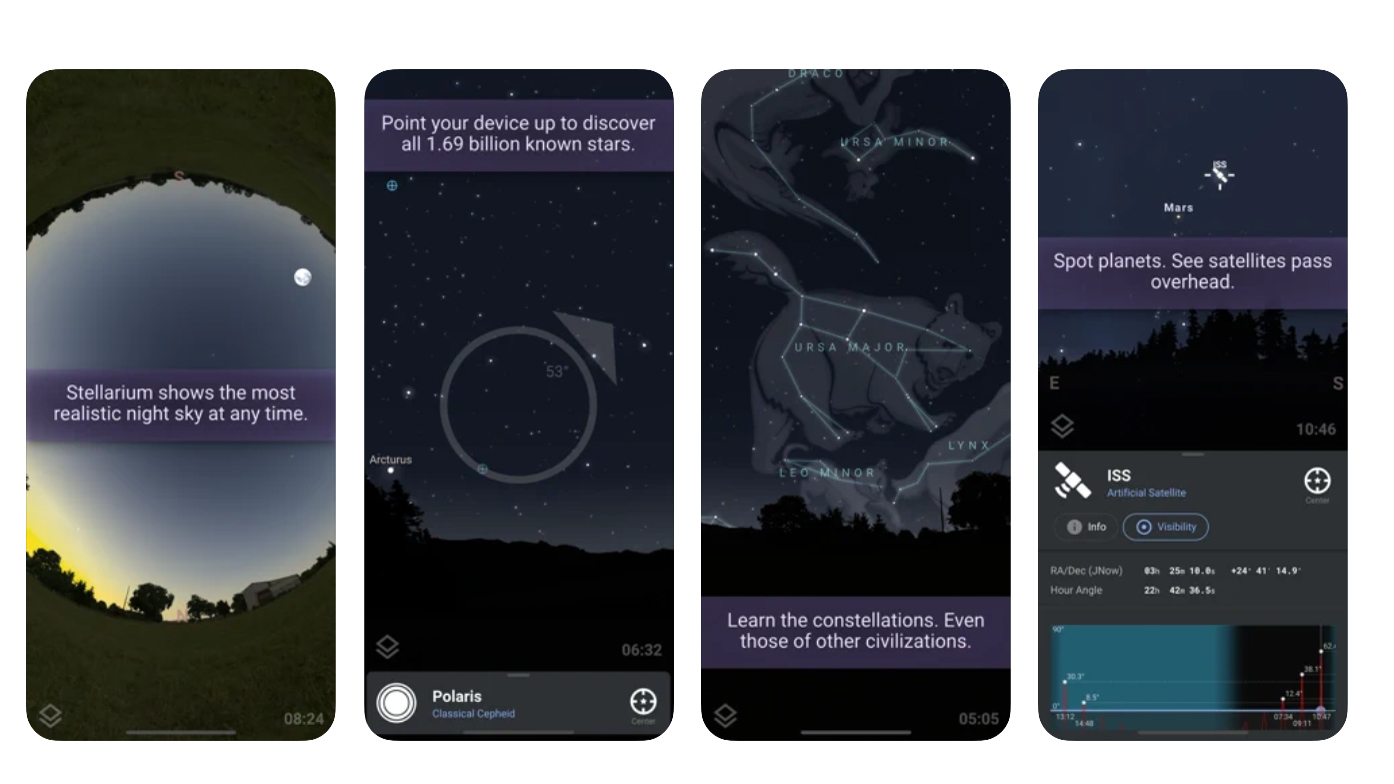
The mobile version of the well-known open-source desktop app, this is a superb app that’s notable for the quality of its constellation illustrations. Unlike its Windows and Mac counterparts, however, you need to pay for it. Which is fair enough, programmers have to make a living too.
What you get for your money is a database that contains more stars than any other app, but not as many asteroids as Sky Safari. It isn’t as polished as that app either, though the way it pinpoints your position using GPS and displays the sky above you is spot on – so the sky you see displayed on your phone will be fairly similar to the real sky above you. You can locate and label your favorite constellations and planets, and even track satellites as they traverse the sky above, and access lore and stats about the stars and planets you select, including stories from different cultures.
Zoom in, and you can access HD photos of nebulae and galaxies, though some such as the Pleiades could do with an update. Pointing your phone at the sky will reveal the objects you can see, while the app also easily connects to most telescopes. Overall, this is one of the better astronomy apps out there.
Star Walk 2: Best stargazing app for beginners
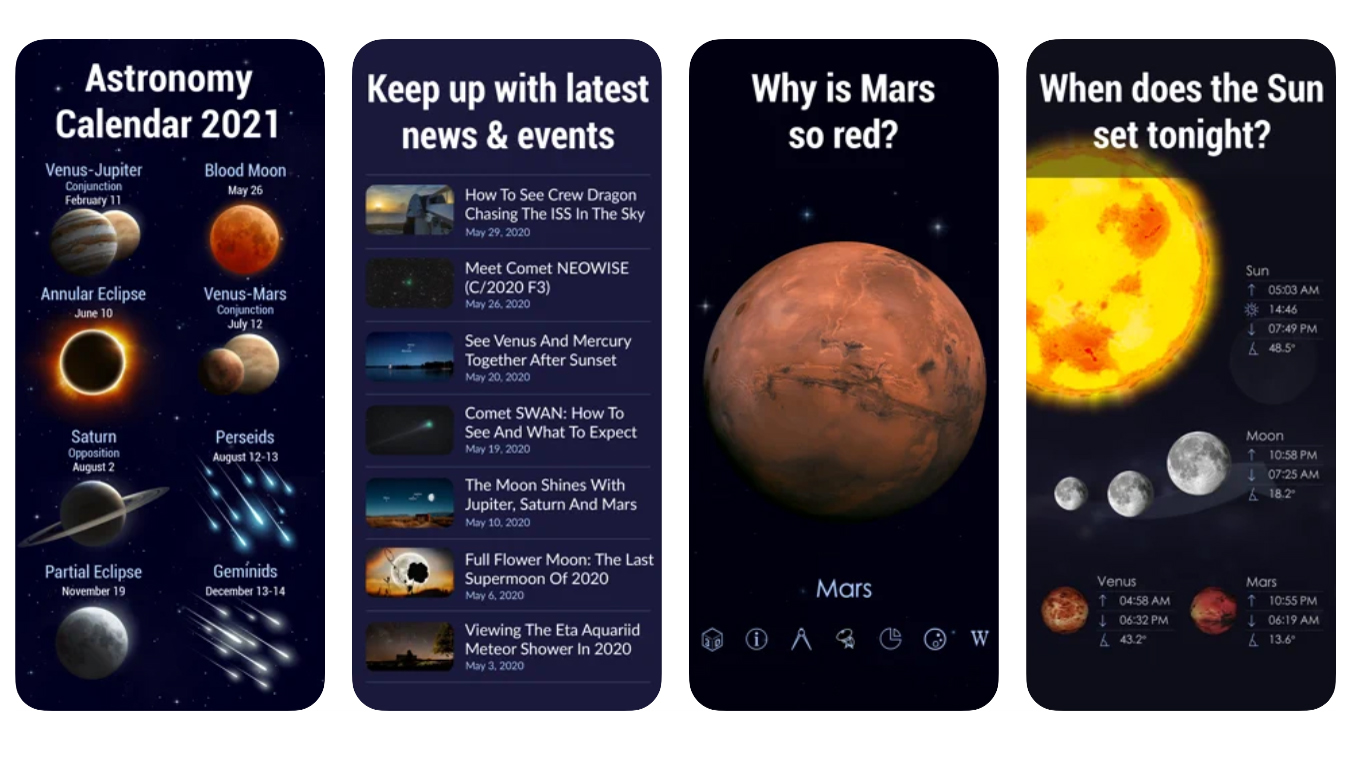
Available as paid-for and free versions, the latter displaying ads and lacking features, Star Walk 2 is an augmented reality experience for the night sky, designed to be experienced through the phone screen rather than by connecting to a scope. It’s easy interface makes it well-suited to beginners.
Let the app view the sky through your phone’s camera, and it will overlay constellations in the direction you’re facing. You can also track the movement of planets and, if you pay for the upgrade, objects such as the International space Station and the Starlink satellites. There’s even a calm audio track you can turn off any time you want.
We liked the ‘Visible Tonight’ section that guides you to spectacular objects you can definitely see on a given evening, with photos and a link to its Wikipedia page for more information. Even at its most expensive, Star Walk 2 is a low-cost way to experience augmented astronomy, and the free version is perfectly usable if you can live with its limitations.
SkyView: Best stargazing app for learners
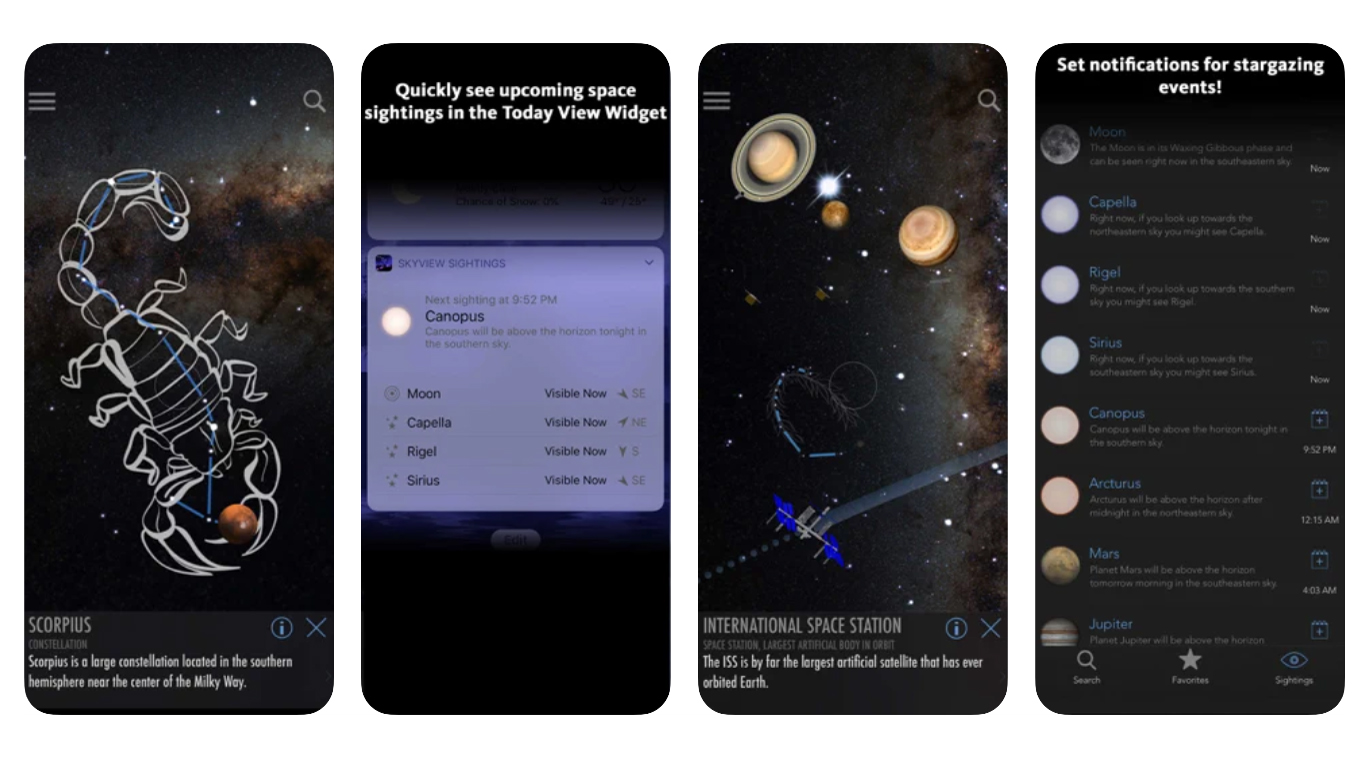
This easy to use and low-cost app (there’s a free version) has been around for a long time, but received many upgrades along the way. Its interactive star map recognises night-sky options and constellations, showing their paths when they cross the centre of the screen.
This is where the app falls down slightly – you need to be very precise in your positioning to get the information you need. Move slightly away from the object you’re interested in, and the details vanish – perhaps the designers had a stable tripod mount in mind rather than handheld viewing. We also found the AR screen to be extremely dark, even for viewing at night, but the graphics are clear and the illustrations of constellations are attractive.
When you do have it properly aligned, however, there’s a lot of info on offer, as you can bring up full descriptions, and even link out to the object’s Wikipedia entry for more.
The free version contains the details of fewer stars and constellations than the paid-for app, but doesn’t burden you with ads. You can upgrade by buying packs of extra stars and satellites, and even a music package. Telescope integration is limited, but there’s enough detail and functionality on offer here to make it attractive to amateur astronomers.
Star Rover: Best low-cost option
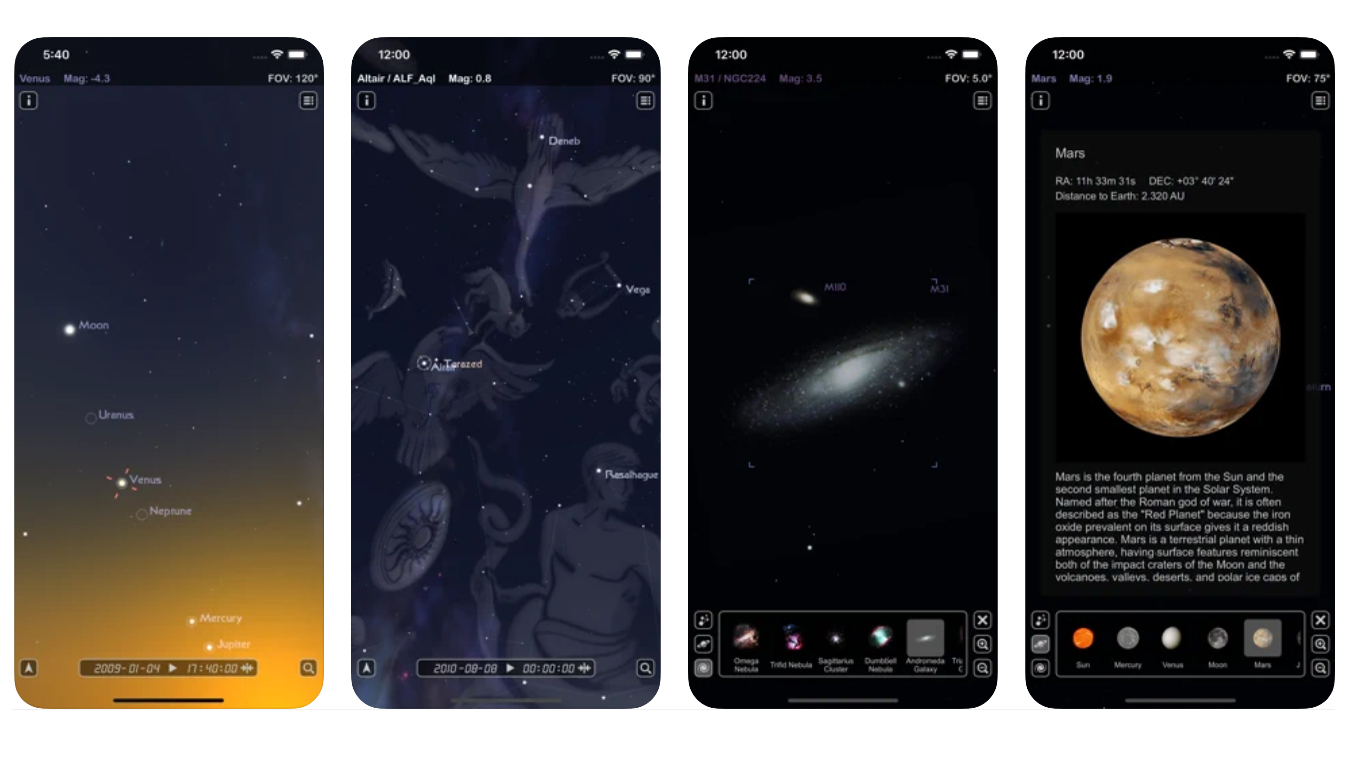
A nicely designed app that’s not too expensive, Star Rover is let down slightly by the size of its database, which doesn’t contain as many stars and other objects as its competitors’ do.
This in no way makes Star Rover a poor app, however – 120,000 stars is still plenty, and it contains all the most interesting and brightest ones. It offers similar functionality to other apps, giving an augmented view of the night sky with constellations marked with illustrations, and tracks for the planets and other notable objects. While there’s a search feature that can ferret out any area of the sky you’re interested in looking at, there’s little additional information on offer once you’ve found what you’re looking for.
Due to its basic interface and blurry font, the app is starting to look rather dated, and could do with an update. Despite this, it’s perfectly usable, has a complete moon-phase and eclipse calendar, can show you objects yet to rise above the horizon, and is extremely competitively priced.
Starlight: Best stargazing app for the basics
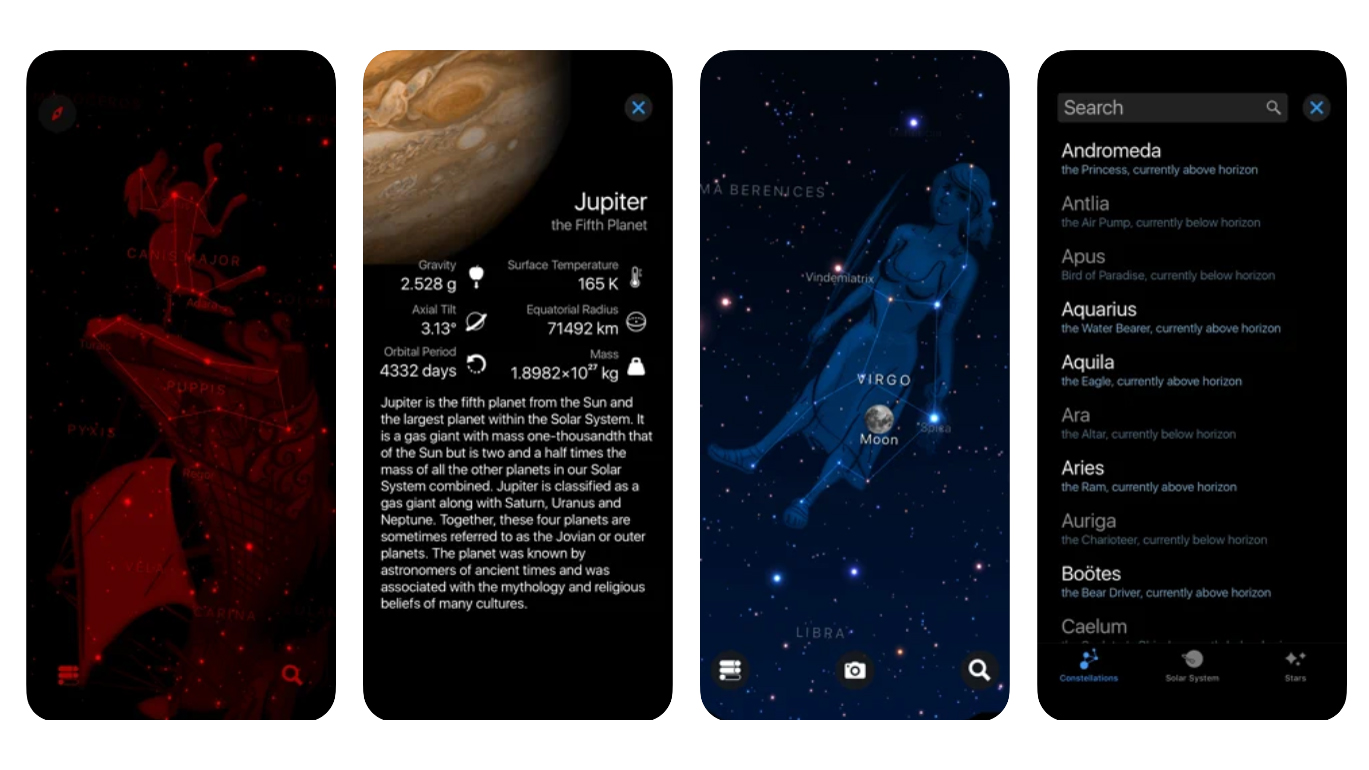
A rather basic app that’s not only cheap, but comes with an ad-supported free version, Starlight is deceptively simple.
The app offers an augmented view of the heavens, with plenty of information on offer. Find something interesting, tap the screen twice, and you’ll be immersed in details about it. Unfortunately, if you’re interested in man-made objects such as the International Space Station, you won’t find it here – its database covers natural objects only.
And while it’s possible to zoom in and find dimmer stars that can be obscured by light pollution, there’s not much detail about them here. Stick to the brightest objects in the night sky, and Starlight will fill you in nicely, with links out to Wikipedia to flesh out the facts.
The ads in the free version take up rather a lot of the screen, so if you’re serious about this beginner’s guide to the galaxy, you’ll get a better experience by paying up. It’s only $2/£2, although for that price you could also get one of the above options that we rate slightly better. The main reason to go for this option? It’s limited database means that you’ll just get the basics when you’re stargazing, so you can focus on learning the main stars first.
SkEye: Best Free Stargazing App
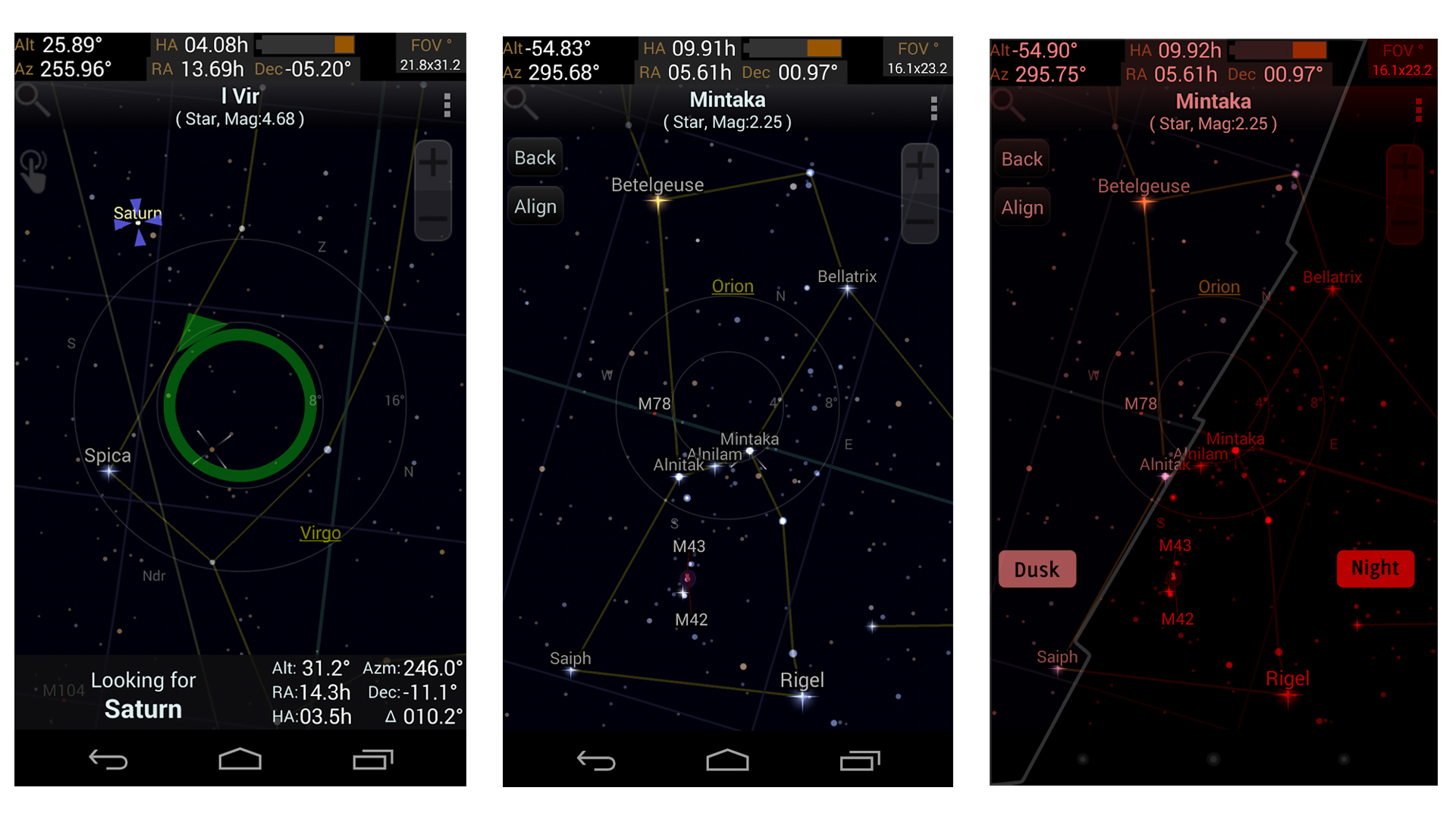
For a stargazing app that offers such a rich, dense resource to observe the night sky with, it’s remarkable that SkEye provides most of its features for free. And while it might not be the most user-friendly of stargazing apps, with little of the visual polish that distinguishes others on this list, the app is still fairly uncluttered and simple to use, once you’ve taken the time to explore it a little.
The basic version of SkEye is available without adverts, while the pro version has the advantage highlighting over 100 satellites, 800 comets, and adds the ability to create a custom catalog for quick access to your favourite objects.
SkEye is a great app for astro-enthusiasts, but novices may find the app a little inscrutable at first, due its fondness for layering advanced metrics and obscure abbreviations over its subjects. If you just need the app to locate a particular object, however, SkEye includes a fantastic search function that gives easy directions to a chosen object.
For enthusiasts though, SkEye is particularly well suited to pairing with a telescope, being compatible with its OTA (optical tube assembly). The app even has a handy “Insta-align” function to make the fiddly process a little easier.
Most stargazers will find everything they need for a rewarding night of observation in SkEye, and the fact that it is free – although sadly unavailable on Apple’s app store – makes it a very attractive app.

